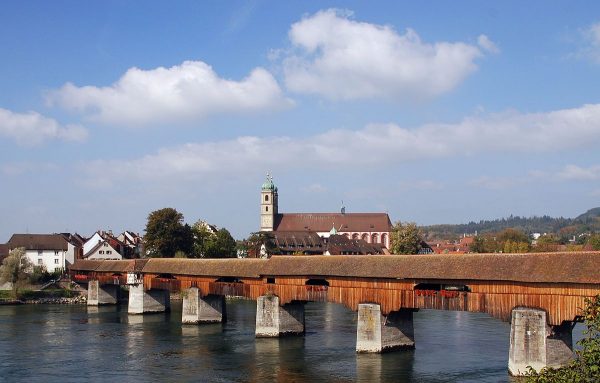Don't invade Switzerland.
Seriously.
Don't.
From 99% Invisible:
Jagged concrete protrusions span for miles along the Swiss Alps. They have been cheerily dubbed “Toblerone Lines” after the famous Swiss chocolate maker, but they have other names, too. More ominous monikers like “dragon teeth” may better fit their original function: to repel invading tanks and other vehicles in wartime. These lines represent some of the most visible elements of defensive infrastructure in a nation known for its perpetual neutrality — a position reinforced by the fact that the country is well-prepared for attacks. Switzerland’s military-trained citizens are armed to the proverbial teeth. Many Swiss defensive strategies, though, are far less visible than spiked ridges and openly carried weapons, including infrastructure carefully designed and built to self-destruct on demand.
Burning Bridges
Reports in 2014 that explosives had finally been removed from a bridge on the Swiss-German border came as a surprise to some — mostly those who hadn’t realized it had been wired to blow in the first place. The Säckinger Bridge was built over the Rhine in 1272 and has long been considered a national monument, but that didn’t stop the government from rigging it with TNT during the Cold War. Military actions like this were part of a larger Swiss defense strategy, which included withdrawing to the mountains and fighting a guerrilla war if invaded. The idea was to leave rubble rather than functional infrastructure behind. These days, the Swiss military won’t comment on whether other infrastructure is still rigged for reasons of military security. Either way, this bridge set up to be demolished on demand is only one example of a longstanding national approach.
In the 1980s, Pulitzer Prize-winning journalist John McPhee wrote a book on the role of the Swiss Army in the country’s cultural and physical landscape. He naturally covered the well-publicized practice of universal military service requirements. In La Place de la Concorde Suisse, though, he also described in detail how the built and natural environments of this small European nation were carefully and extensively weaponized. Bridges were not only designed to be blown up to deter invading forces but were also flanked with hidden artillery to foil enemy repair efforts that might follow demolition.....MORE
Along the Alps, the insides of mountains were carved out to create bunkers and supply storage spaces while their exterior slopes were rigged to trigger landslides. Railroad and highway tunnels were designed to be destroyed quickly, too. In short: for much of the 20th century, Swiss infrastructural engineers were tasked with a dual mandate — they had to make functional and durable structures but also incorporate methods for rapid demolition into their designs....
And in other Swiss infrastructure news at 99% Invisible:
Swiss Cat Ladders: Documenting & Deconstructing Feline-Friendly Infrastructure

Cat ladders, shelves and other feline-oriented designs are commonplace features inside domestic spaces, but in places like Bern, Switzerland, they reach out into the public sphere as well, merging with architecture to create community-driven cat infrastructure........MUCH MORE

